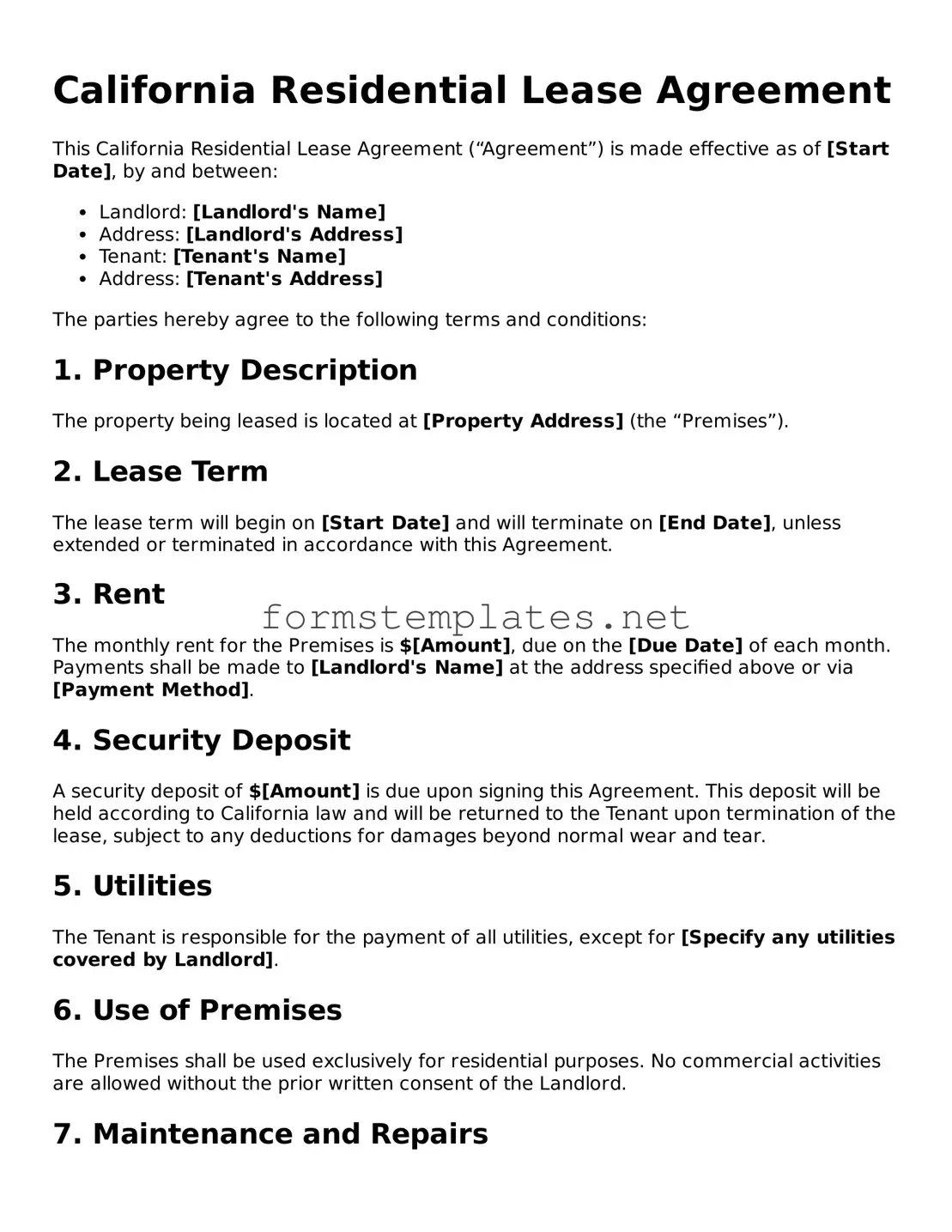California Residential Lease Agreement
This California Residential Lease Agreement (“Agreement”) is made effective as of [Start Date], by and between:
- Landlord: [Landlord's Name]
- Address: [Landlord's Address]
- Tenant: [Tenant's Name]
- Address: [Tenant's Address]
The parties hereby agree to the following terms and conditions:
1. Property Description
The property being leased is located at [Property Address] (the “Premises”).
2. Lease Term
The lease term will begin on [Start Date] and will terminate on [End Date], unless extended or terminated in accordance with this Agreement.
3. Rent
The monthly rent for the Premises is $[Amount], due on the [Due Date] of each month. Payments shall be made to [Landlord's Name] at the address specified above or via [Payment Method].
4. Security Deposit
A security deposit of $[Amount] is due upon signing this Agreement. This deposit will be held according to California law and will be returned to the Tenant upon termination of the lease, subject to any deductions for damages beyond normal wear and tear.
5. Utilities
The Tenant is responsible for the payment of all utilities, except for [Specify any utilities covered by Landlord].
6. Use of Premises
The Premises shall be used exclusively for residential purposes. No commercial activities are allowed without the prior written consent of the Landlord.
7. Maintenance and Repairs
The Tenant agrees to maintain the Premises in a clean and safe condition. Any damage, except for normal wear and tear, must be reported to the Landlord immediately.
8. Termination
EITHER party may terminate this Agreement upon giving written notice of [Notice Period] days. Upon termination, Tenant shall vacate the Premises and return all keys to the Landlord.
9. Governing Law
This Agreement shall be governed by the laws of the State of California.
IN WITNESS WHEREOF, the parties have executed this Lease Agreement as of the date first above written.
- ________________________ (Landlord Signature) Date: ________________
- ________________________ (Tenant Signature) Date: ________________
